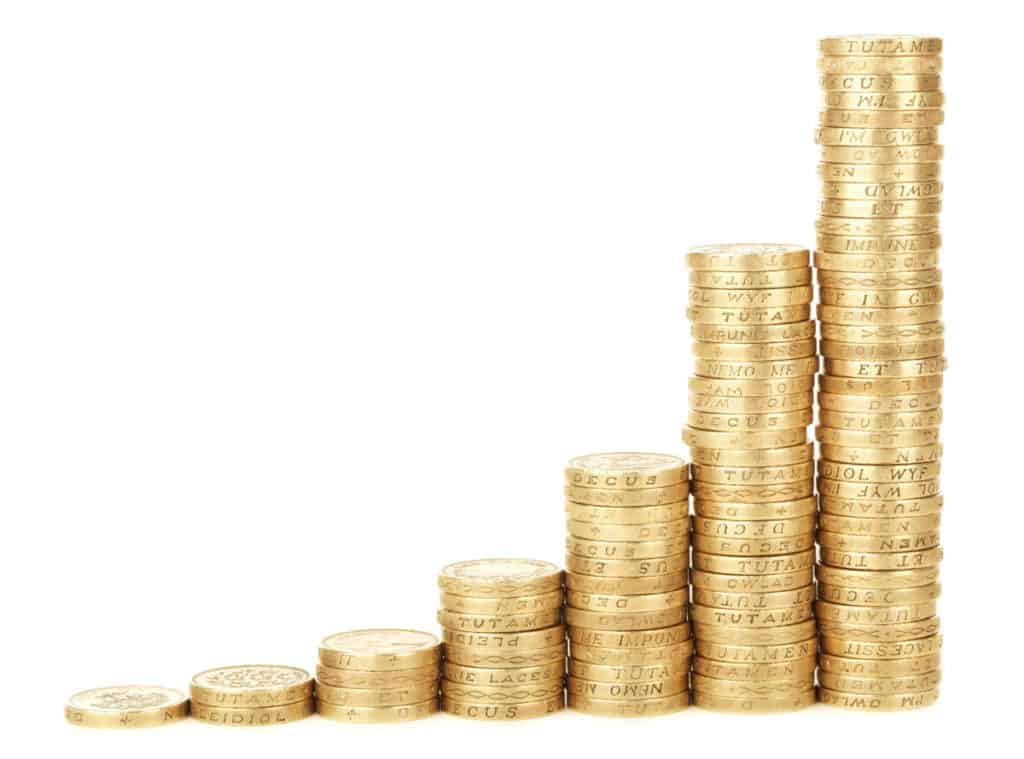Have you ever wondered which factors and types of credit will bring you the highest possible credit score? Responsible use of your credit can get you there with one loan paid on time. But what is the right mix of the different factors and credit types to boost your score even higher?
Credit scoring models want to see that you manage all different types of credit lines with on-time payments and low credit balances. There are 4 types of credit. Credit cards, known as revolving credit, installment loans, mortgages and auto loans. You want to have a good mix of all of them to help keep your credit score as high as possible. Having all of the types of credit is not necessary to have a high score though. See the exact factors affecting your score.
Four Types of Credit and How They Are Different
- Credit Cards and Revolving loans – Revolving lines of credit or credit cards refers to when a credit line stays open and keeps replenishing your allowable credit line up to the limit. When you pay off or pay down the balance your credit becomes available again. It offers customer access to funds to cover cash flow needs from a financial institution and allows the customer to use the funds when needed. The consumer can draw different amounts from the line depending on their cash flow needs.
- Personal Loans – They are an installment loan that has a fixed payment and the credit is not reextended. Personal loans are installment accounts and are typically under $25k and unsecured. They typically require a high credit score. Some finance companies that work with lower credit scores may require you to secure your loan with household items that you own such as TV’s, jewelry and appliances.
- Mortgage Loan – A loan that is secured by real estate. It is considered a secured loan that can typically span for 10, 20 or 30years.
- Auto Loan – A loan that is secured by an automobile. It is considered a secured loan that is typically 3-5 years.
Understanding FICO Credit Scoring Models
FICO credit scoring models are an analysis of your personal spending and payment habits used by the three credit bureaus. They evaluate your risk and lending guidelines determine your likelihood to receive credit based on your scores and other factors. Simply put, the agencies look at certain characteristics found in a person’s spending and payment patterns and compare those against years of credit data. They then analyze those patterns and come up with a credit score.
Much of this is based on statistical information from past borrowers over many years. As an example, if X number of borrowers utilizes their credit card balances above 70% of the credit limit and then default within 12 months, those statistics are used to predict future behavior. Statistically, future borrowers who follow similar patterns are also at risk for defaulting in the next 12 months. The lending guidelines change to reflect the current statistics and models which also change periodically.
The system is designed this way. The higher the score, the less likely it is that a borrower will miss payments or go into default.
Credit Score Factors According to FICO
According to FICO, having a variety of loans is necessary for maximizing your credit score. I do not recommend going out and borrowing money to get that blend of credit account. It will not drop your score significantly enough to matter since it is the least important of the five factors in FICO’s formula. When I have helped people in the past it was more important to keep your balances low and not have late payments. This should only be used if striving for the best score possible. Ultimately, the best way is to responsibly utilize your credit.
FICO Scores are calculated using many different pieces of credit information in your credit report.
- payment history (35%)
- amounts owed (30%)
- length of credit history (15%)
- new credit (10%)
- credit mix (10%)
Obviously the higher the percentage the more important the category. if you have not been using your credit for a long time this can play a bigger role because that is all you have right now. Certain groups of people who have not been using credit long, maybe different from the relative importance of these categories. You will need to understand the details to know more about your score.

This data is grouped into five categories with many different sub-factors that can affect a credit score:
1. Payment History – (35%)
- Payment information on many types of accounts: credit cards, retail accounts, installment loans and finance company accounts
- Bankruptcy, total default and collection items
- Details on late or missed payments (delinquencies), bankruptcies, and collection items
- Number of accounts that show no late payments, or are currently paid as agreed
Having late payments, and even worse, collections or bankruptcy will have the most significant effect on your score in this category. With that being said, if you have a long history of good credit and making your payments on time on many accounts, a one-time late payment, will not have that big of an impact and over time will heal fairly quickly as long as it does not happen again.
2. The Amounts You Owe – (30%)
- The total amount owed on all accounts
- The amount owed on different types of accounts
- Balances owed on certain types of accounts like credit cards vs. installment loans
- The number of accounts which carry a balance
- How much of the total credit line is being used on revolving credit accounts
- What is still owed on installment loans, compared with the original loan amounts

The ways you utilize your credit is one of the most important things to understand in this category. Credit utilization takes into account what you own in comparison to how much credit you have available.
According to FICO’s research, people who are consistently utilizing a large percentage of their available credit are more likely to have late payments ore even worse total default. People who keep low balances have a limited history fo late payments or default.
I have customers who keep high balances and have never defaulted or have a late payment. But statistically, this is not the case and FICO has the data to show that. If you have a long history of making on-time payments on your balances then this is a good way to show lenders you can responsibly manage additional credit. However, in the long run, it is not a good practice because it can affect your debt to income ratios. Not to mention, people who practice good financial habits typically do not want to pay interest on revolving debt for years to come.
3. Length of Credit History – (15%)
In general, the older your credit file is the better your FICO score will be. However, I have also seen where folks who have not been using credit long can get a high FICO Score. Making payments on time, keeping low balances and their credit utilization goes a long way in the FICO scoring model. When it comes to the length of history, a FICO Score takes the following factors into account:

- How long have your credit accounts have been established? The scoring system from FICO takes the overall age of the account into consideration. FICO will take the average age of all accounts
- The length of time credit accounts have been established
- How long it has been since you used certain credit lines or accounts. In the past, I have put a balance on a card for 30 days so I am using all of my credit accounts and building a strong history.
4. New Credit – (10%)
Robo-applying for credit is not a good idea especially when you are starting to build your credit file. Opening several credit accounts in a short period is a signal to FICO that you are being risky with your credit. This is more for people who do not have a long credit history. FICO Score does take this into account:
- How many new accounts have been opened
- How long it has been since a new account was opened
- Are there any recent requests for credit that have been made, as indicated by inquiries to the consumer reporting agencies
- Length of time since inquiries from credit applications was made by lenders
- Whether there is a good recent credit history, following any past payment problems.
If you are currently looking for an auto, mortgage or student loan, this may cause multiple lenders to request your credit report at the same time, even though you are only looking for one loan.
FICO knows that people may periodically shop for credit when making a large purchase. It is smart to check interest rates and terms when applying for credit. Generally, FICO will compensate for this behavior in the following ways:
- FICO will usually only drop you a couple of points when lenders have made inquiries for an application for auto, mortgage, and student loans made in the 30 days prior to scoring. This way the inquiries won’t affect the scores of consumers who apply for a loan within 30 days.
- After 30 days, inquiries of the same types of loans that fall within a typical shopping period will show as just one inquiry when determining your score. This is important to note because I have seen someone who was prequalified for a mortgage get denied in the end because they had their credit pulled right before closing to purchase furniture or a car. Once you have applied for a loan and determined which lender you are going to use it is important not to pull your credit again. These new debts and credit inquiries will only complicate things.
5. Types of Credit in Use – (10%)
FICO will take into consideration your mix of credit cards, retail accounts, installment loans, finance company accounts and mortgage loans. This does not mean that you need to go out and have one of each type of credit line. You do not want to open new credit lines that you do not need. It is just not a good idea to open multiple credit accounts trying to get that mix. Some lenders will use too much available credit against you in the decision-making process. Conversely, if all you have is one credit card, that may affect your score negatively but also not fit the lender’s requirements for credit.
Many people feel that they are being responsible never having to use credit but that is not the case. The FICO scoring model wants to see how you handle access to credit. If you have no credit accounts then you have no history showing you can handle it.
- The scoring model and lenders will want to know what types of credit accounts are on your report? Do you have experience with both revolving and installment accounts? Has the credit experience been limited to one kind of account?
- How many accounts of each type exist? FICO also looks at the total number of accounts established. For different credit profiles, how many is too many will vary depending on the overall credit picture.
Making On-Time Payments and Keeping Your Balances Low
Instead of applying for many different types of loans to raise your score, it is better to make on-time payments with the accounts you already have. On-time payments and low balances are the best two factors to focus on. Then you can, over time, implement the second two factors.
FICO says a good score will depend mostly on always paying your bills on time and keeping your revolving credit balances low. You should only open new loan accounts only when necessary. Seeking out a mix of credit with new loans makes little sense when these other factors are much more important in the scoring system.

For consumers who are considering their credit mix as a way to raise their credit score, it’s best to consider this category as more of an afterthought to raise your FICO score.
The Affect of High Balances VS Credit Limits
A couple of months ago, I had a septic tank in one of my rentals that needed to be replaced. The contractor did not give a discount for cash. I created my own discount by putting the new septic system on one of my higher paying points cards.
Approximately $7400 hit my balance in one charge. Now I always pay off my credit cards every month in full. My score only took a 30 point hit from this one balance. I paid it off on the due date like I usually do. On my next credit report, the balance vs. credit limit hit my score.
I am curious to see how long it will take to get those points back. Now I have to wait 30 days to see what my score will do once it hits the credit reporting system with a new lower balance.
The factor for the 30 point damage to my score was this:
- Balance to credit limit ratio on one credit card
My limit on that card was $12k dollars. Putting close to $8k on the card in one month caused the drop in score. I had used over 60% of my credit limit. BAM!
Fortunately, I have a high enough score that it is not a big deal and I am not planning on using my credit anytime soon. Regardless, my score is still in the high 700s and will not prevent me from obtaining excellent rates and terms.
I received an email in about 30 days that said my score had changed again and to review my credit report. I logged in and my score had gone up back to where it was. In addition, the credit card company that the card was attached to raised my limit from $12k to $15k because I paid off the $8k septic bill in one month.
If you have a lower score that stems from other factors, you can lose up to 100 points when you make these types of purchases or have a late payment. If I was concerned about losing points from my credit score it would have been beneficial to spread the $7400 over two or three cards.
Wrap Up
Now that you understand the 5 different factors FICO uses to determine your score, you can in time, create a credit file with high FICO scores. Understanding the factors FICO uses to determine your score is an important first step to building a solid credit history. You will see after certain milestones your score will continually improve.


